Genre: Action/Strategy Developer: Fred Ford/Paul Reiche III Publisher: Accolade Players: 1-2 Released: 1991
It all began with Star Control. Paul Reiche III and Fred Ford’s masterpiece of science fiction game design won countless awards and praise from the press. The Genesis port of the PC classic came at the perfect time for Accolade, which had just gone about creating its Ballistic label for high quality games. Ballistic titles were to provide only the best gaming has to offer, and the company was so certain of this that it sought the services of Boris Vallejo to paint the covers for all Ballistic releases. Of the initial line-up, Star Control was unique, as it would be the first 12-megabit video game cartridge.
By and large consumers paid no attention to cartridges sizes, but the Sega Genesis changed all that beginning with Strider, the first 8-megabit cartridge. The connection was then made that the bigger the game, the better it was — a bigger game meant more data for graphics, levels, music, and so forth — and Strider did a tremendous job in driving that point home. Star Control flaunts its 12-megabit cartridge right on the package, stating that it devotes a whole 5-megabits to music and sound effects alone. Unfortunately, you really have to wonder where all that memory went as the game is as silent as they come. Beyond the title and ending themes, the music consists of just 14 short clips, one for each alien race and lasting only a few seconds, played when you defeat the enemy or view an alien race’s profile. The sound effects are clear and decent but nothing to write home about, the only ones of note being the authentic whimper of a shot Chenjesu Broodhome D.O.G.I. and the Ur-Quan Dreadnought’s fearsome “Launch Fighters!” command. Otherwise, lasers, shields, and other sound effects sound as though they could have been pulled from an episode of Star Trek.
Star Control is heavily inspired by Star Trek and other science fiction media in design as well. The Ilwrath Avenger is a dead ringer for a Klingon Bird-of-Prey right down to the Optical Cloaking Device, while the changing wing formation of the Mmrnmhrm Transformer recalls Star Wars‘ own X-Wing Fighter. That’s not to say that the game lacks original touches — the Syreen Penetrator’s siren song which lures an opponent’s crew to eject themselves from their ship and the Androsynth Guardian’s Blazer form which allows its bubble producing ship to turn into a destructive comet are certainly unique. While Star Control graphically does borrow from existing concepts, the design and presentation is so impeccably done that it stands well on its own.
It’s a travesty to see such a well designed game have to put up with subpar sound and graphics, especially in light of all the excess memory. Space is horrendously repetitive, the only thing distinguishing one star battle from the next is the occasional change of the sole static planet or moon sprite. While the asteroids do revolve as they drift through space, the planets and ships themselves look incredibly flat in comparison. The animation of the ships and pilots are mediocre at best. Given how few detailed sprites there are in the game (14 ships and pilots, a single asteroid sprite, and a handful of planets), you’d expect the game to look fluid and amazing backed by the 7-megabits or so devoted solely to so few objects. The rotating star map looks neat, but it’s nothing which could not be done in Q-BASIC. Star Control is not a title that will impress your eyes and ears; however, that the game can overcome such audio/visual shortcomings and be held in such high regard should be viewed as a sign of the strength of its gameplay and depth.
Without a doubt the strength of Star Control lay in its excellent ship battles and engaging yet easy to manage strategy game. In the full game, you’ll begin on any of 15 scenarios which spit you out onto a rotating star map (unexplored stars can be made invisible for an extra challenge). At opposite ends of the map are starbases from which you will build ships to conquer the map with. Each player has three actions per turn. Will you move out to explore some new star? Will you colonize a life world for recruiting or a mineral world for mining? Perhaps you will fortify some stars leading to your base to aid in defense? While the game does not offer many options, the variety and number of stars, routes, and ships allow for enough strategy planning.
When two or more opposing ships meet on a star, a melee battle ensues. Each ship is randomly placed – sometimes far apart; other times in breathing range — on a flat zooming space backdrop. The “zooming” effect is similar to Joe Montana 2, where the game seems to just switch between three differently scaled versions of the game to “zoom” in-and-out on the action. The effect isn’t as seamless as I would like, and it is not uncommon to accidentally plow your brand new expensive ship smack into a planet that you could not see either because the game zoomed in too close or had your ship at the far edges of the screen. Aside from such unforeseen damage, planets and their impact on the game’s physics engine play heavily into battles. A slower ship can use the gravity of a planet to slingshot itself at high speed toward the enemy, while weaker ships can use the occasional asteroid as cover from enemy fire or try to trick a chasing enemy to get sucked into the planet’s gravitational pull.
The ships of the Ur-Quan Hierarchy and the Alliance of Free Stars are well matched, and in the right hands, it is not unusual to see a less expensive ship defeat its higher ranked enemy. Each ship has two weapons or abilities at its disposal along with its own movement and speed strengths and weaknesses. Though the cheapest ships do lack the firepower and maneuverability to lay waste to the top brass, they’re more than capable of dishing out a sizable chunk of damage or finishing the job as needed. For example, the Shofixti Scout has a pea shooter as a primary weapon which wouldn’t threaten a fly, but it also can trigger its Glory Device when close to the enemy, self-destructing and damaging anything in range. Generally, though, these cheaper ships will be used as scouts to explore stars and expand your control of space.
Ultimately, though, it’s this focus on arcade-action which can hurt the game. Even on the game’s highest computer difficulty, the AI is no match for its human opponent. The Ilwrath Avenger’s cloaking ability is a neat idea… except that the zooming battle map will always give away the ship’s position, and as a player playing as the cloaked ship, control is made more difficult since you lack the ability to see where the ship is yourself. The Arilou Skiff is also way overpowered despite its puny crew, range, and damage thanks to its incredible mobility and ability to pass right through enemy fortifications without having to siege them (which would cost a turn with only a 10% chance of success save the Ur-Quan Dreadnought). The random ship placement can be annoying at times, especially when you start off with your cumbersome and expensive Chenjesu Broodhome getting rear ended by a VUX Intruder’s Gigawatt Laser. Finally, matches pitting a speedy vessel against a slow one can last far, far too long, as a few ships such as the Spathi Discriminator prefer forever speeding outside an opponent’s range, launching weak B.U.T.T. missiles or whatnot behind it.
These faults far from ruin the game, but they can sour it at times. Paul Reiche III and Fred Ford do acknowledge the Arilou Skiff’s overpowered status by making it occasionally warp into a planet or asteroid in Star Control II – thus killing the ship – but then that and other gameplay fixes are not present in the subject of this review. While the player can find Precursor Relics, which act as power-up bonuses scattered among unexplored stars, to bolster a ship’s weaknesses, their locations and probability are too unpredictable to stop the possibility of long, drawn out battles during a game. While such battles can be immensely satisfying to win, the game’s lack of a password or save feature make such encounters all the more annoying for those not wanting to spend upwards of twenty minutes or so on a single battle.
Despite the complaints, Star Control remains a fantastic game and a blueprint for what many would call one of if not the best game ever, Star Control II. The gameplay is superb in its simplicity, and the wide variety of ships allow for numerous strategic possibilities. Though you won’t find twelve megabits of graphics or music on the cartridge, mastering each ship and taking on others in the melee mode is terrific fun, making for a Space War-style “fighter” with arguably more depth with just three buttons than Street Fighter II did with six. The strategy portion is just the icing on the cake.
SCORE: 8 out of 10

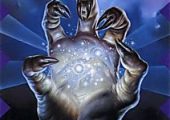
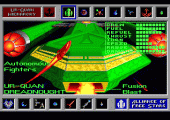
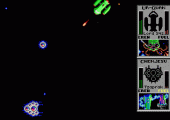
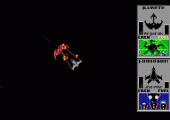
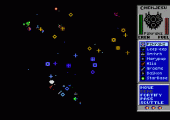
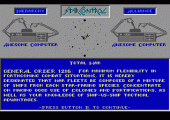
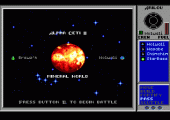
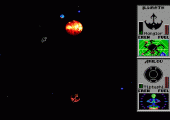
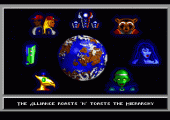
Recent Comments